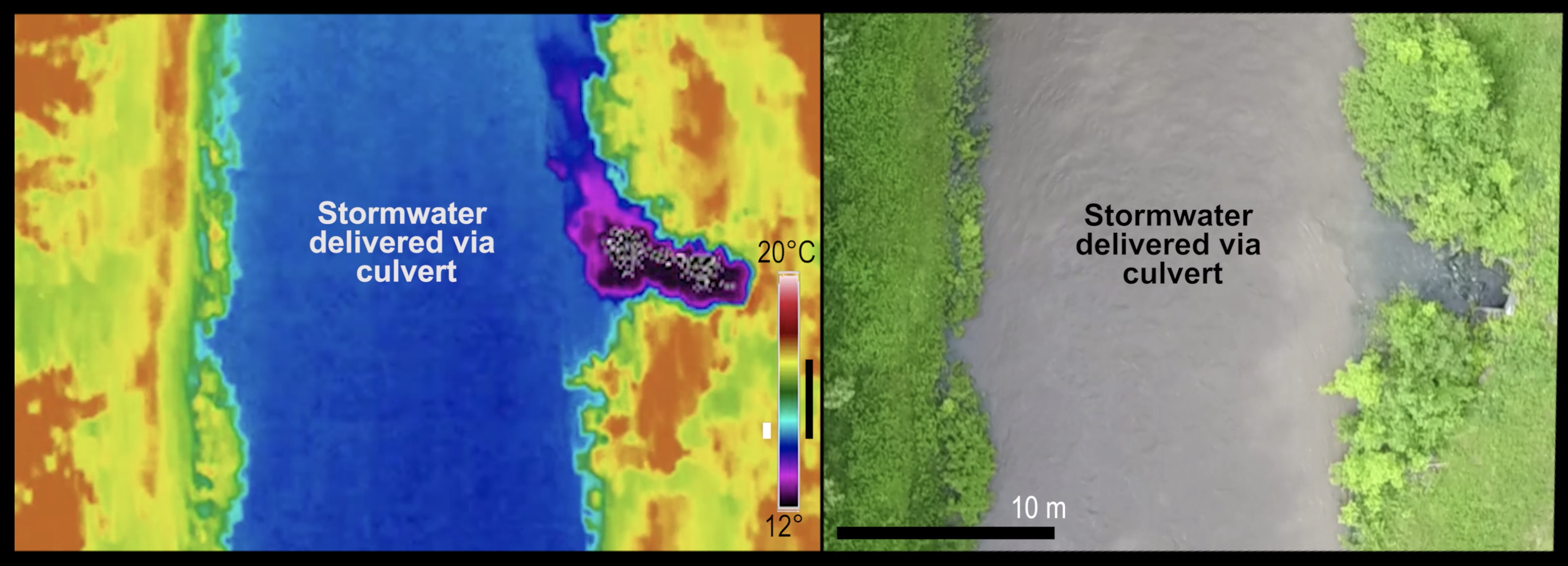Christa Kelleher
Assistant Professor, Department of Earth Sciences and Department of Civil and Environmental Engineering, Syracuse University
Published research for this project:
 Project: Monitoring longitudinal patterns of stream temperature and levels of storm flow along Onondaga Creek.
Project: Monitoring longitudinal patterns of stream temperature and levels of storm flow along Onondaga Creek.
The Basics: Numerous culverts along Onondaga Creek funnel storm water into the creek, which flows into Onondaga Lake. Storm water is warm and typically raises the temperature of the water it flows into, potentially making an ecological impact on the biology of the body of water.
Nuts and Bolts: Kelleher is building visual temperature models with data she’s collecting through use of a thermal camera mounted on an unmanned aerial vehicle. “Conventionally, if you wanted to measure temperature, you’d install sensors at various points along the stream,” says Kelleher. “The camera on the drone allows me to look at patterns and differences across the stream.”
What She Knows: Some of the water inputs are colder than expected. “There’s a natural spring coming in near the top of the study reach, which as expected, is coming in very cold. But there are culvert inputs along the way, some of which are warm and some are colder than anticipated,” she says. “These things just light up like a Christmas tree on the imagery. It’s great.”
Lessons to Learn: Other research of this type has been conducted in warmer climates, so Kelleher says it’s possible that thermal pollution may not be as big an issue in Syracuse. “We also haven’t done a test in the heat of the summer yet, so we’ll see how different things look then.”
SyracuseCoE Impact: A $10,000 competitive award from the SyracuseCoE Faculty Fellow Program allowed Kelleher to purchase the thermal camera, pay for a pilot to fly the drone, and support Syracuse University Earth sciences graduate student Sam Caldwell to assist on the project. “As a new faculty member in a variable funding environment, it’s been great to get support for a local project, both to help me learn the area and to connect with other researchers on campus,” says Kelleher, who is organizing a session on Water in Urban Environments at the 2017 SyracuseCoE Symposium.
Bottom Line: In the Eastern United States, storm water is a big concern that will increase with climate change and urbanization of the landscape. “The more that we can understand how storm flow changes water quantity and water quality, the better we can design structures or rehabilitate existing infrastructure to help things downstream,” Kelleher says.
Read more about the researchers in the SyracuseCoE Faculty Fellows Program.
